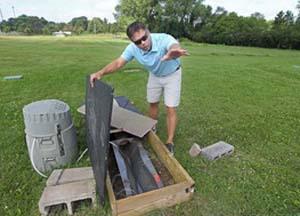
Nicknamed the Land of 10,000 Lakes, Minnesota isn't the first place that comes to mind when one thinks about water shortages, but researchers at the state's flagship university are playing a leading role in hopefully helping golf courses to use less water, chemicals and just about anything else a superintendent can apply to turf.
For more than 10 years, Brian Horgan, Ph.D., and Eric Watkins, Ph.D., have been working to develop a turf type fine fescue they say will use less water, less fertilizer, fewer pesticides and can go longer between mowings, the researchers say. And they hope the new turf will be considered for use on the university's Les Bolstad Golf Course after an upcoming Tom Lehman-led restoration.
The development of this new turf is part of the University of Minnesota Science of (the) Green initiative, a Bolstad-centered effort that addresses the golf industry's need for long-term agronomic, economic and environmental sustainability.
Although the new turf requires fewer inputs, there is a downside, the researchers said.
Fine fescues can be less dense than bentgrass or bluegrass, making runoff a threat. Fescue is more easily damaged by golfer traffic and is slower to recover from stress-induced damage. It also doesn't have the lush green visual appeal as some other turf varieties.
Still, Watkins said that fine fescues overall are suitable for use in Minnesota and other areas growing cool-season turf, and researchers are studying whether some of the weaknesses can be overcome by mixing fescue varieties, breeding or other strategies.
Horgan and Watkins will continue to research different properties of fescues and other grasses, and said that no decision has been made yet about whether the Les Bolstad golf course will eventually become a living laboratory for them and others across the country. It also is unclear whether different grass might be used on putting greens and tee boxes, which constitute about 4 acres on a typical golf course.
Adding interest to the potential project is the California drought and water shortages elsewhere, Watkins said. Typically those golf courses use different grasses, he said, but the historically dry conditions are helping golfers, businesses, farmers and the general public to understand the importance of conserving water everywhere.

